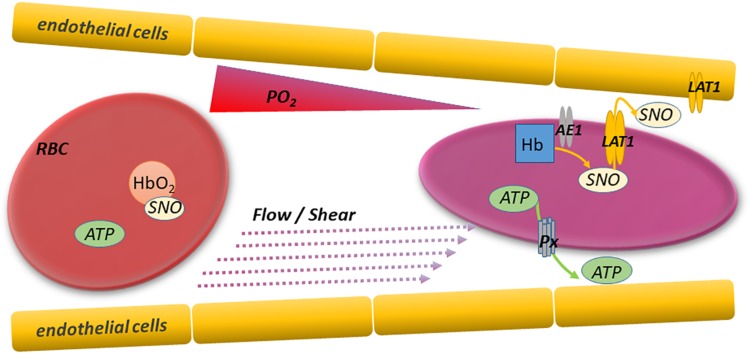FIGURE 1.
RBC deformation and export of vasoactive and antiadhesive mediators. Red blood cells sense and respond internally and externally to changing conditions as they traverse arterioles and capillaries. Specifically, RBCs deform and offload oxygen in progressively narrower and more hypoxic microvessels perfusing respiring tissues. The resulting RBC deformation and hemoglobin deoxygenation trigger the export of mediators like ATP and SNO that can regulate microvascular tone and prevent intercellular adhesion. This paracrine signaling enables the adaptive and unfettered flow of upstream RBCs as needed, and thereby optimizes O2 delivery and CO2 clearance. Responsible mediator transporters include pannexin 1 (P×1) for ATP and LAT1 (system L amino acid transporter) for SNO. RBC ATP and SNO can also act via autocrine mechanisms regulating functions including the RBC’s ability to deform in response to shear stress.

